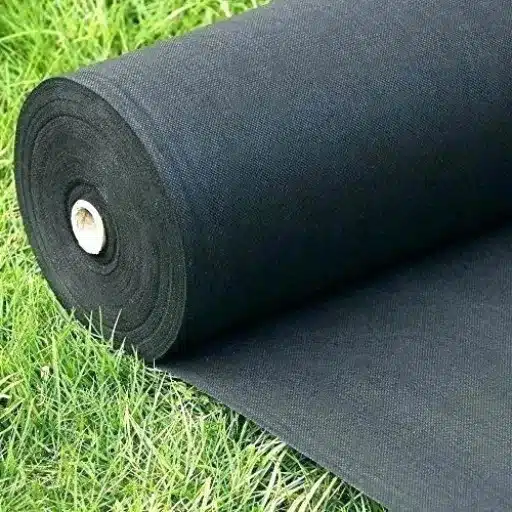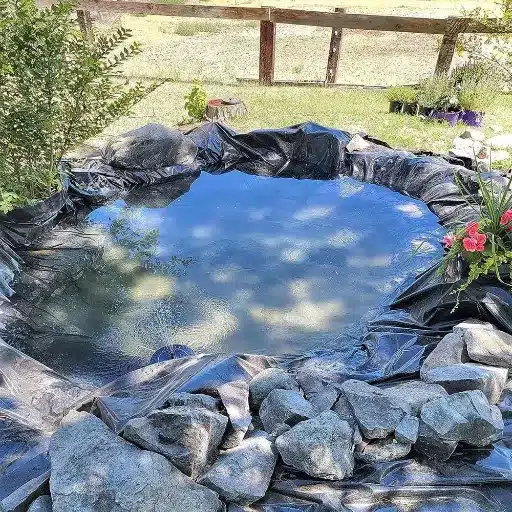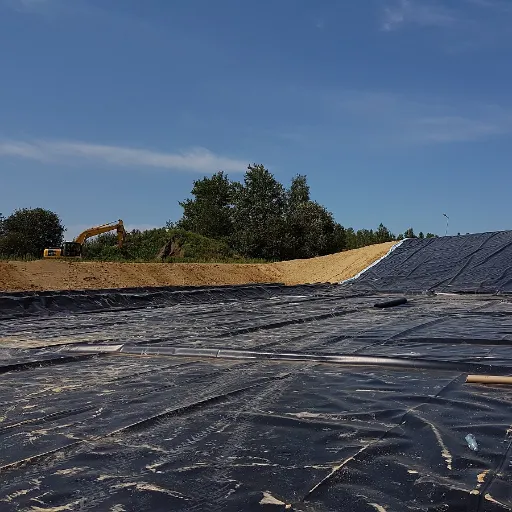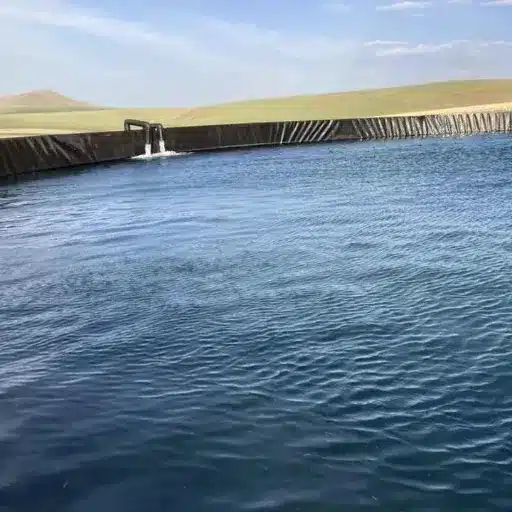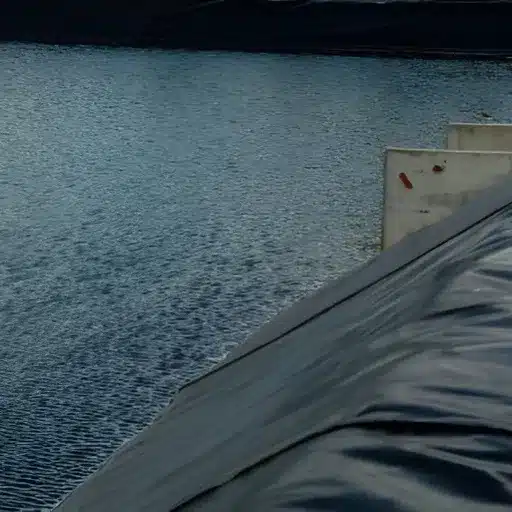Weeds, gardeners and landscapers’ constant trouble, not only take over the outdoor space but also depril the plants of the needed nutrients. However, here is the silver lining: with the use of landscape fabric as a weed barrier, a very powerful and efficient solution is at your disposal to keep these irritating interlopers away. In this guide, we shall be discussing the best available options and providing you with practical recommendations to help you in choosing the perfect fabric for your needs. It does not matter if you have a flower garden, vegetable plot, or large landscaping undertaking, discover how this simple yet powerful tool can easily allow you to maintain a clean and weed-free area.
Understanding Weed Barriers
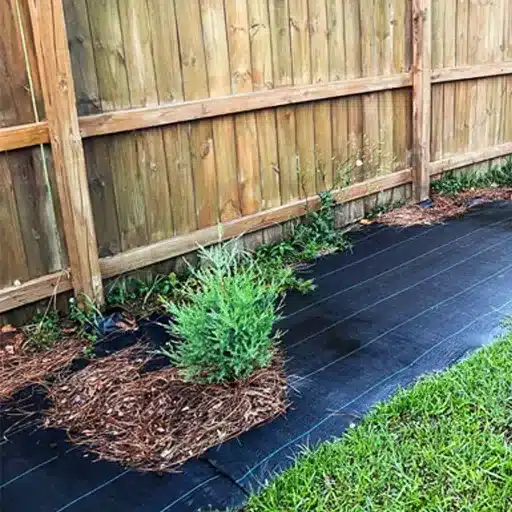
What are Weed Barriers?
Weed barriers are a type of fabric that is installed in landscaping or gardening applications to keep the weeds from growing while allowing the soil to breathe and absorb water and nutrients. As such, these barriers not only protect the soil from the harsh environment but also lessen the dependence on chemical herbicides and manual weeding. Typically, weed barriers are made of polypropylene or polyester, which are durable and resistant to natural degrading.
If they receive the right treatment, weed barriers will suppress weeds for many years with efficiency. The use of quality barriers may result in a 90% reduction of the invasive weed growth, thus making it easy and affordable to keep the area maintained. Some of the new barriers come with UV coating that even extends their service life considerably.
Types of Weed Barrier Fabric
1. Woven Weed Barrier Fabric
Woven fabrics are produced by close weaving of polyethylene or polypropylene yarns. It has excellent longevity and at the same time allows the passing of water and nutrients while blocking light very well thus making it kill the weeds on the surface. Woven weed barriers are ideal for large gardens, landscaping, and places with serious weed infestations. The weight of these fabrics is generally 4 to 8 ounces per square yard, and they have a lifespan of 12 years or more.
2. Non-Woven Weed Barrier Fabric
Non-woven fabrics are made from synthetic fibers that are felt-like in texture and bonded together. The non-woven barriers allow water and light to penetrate only to a small extent, therefore, they can be recommended only for the areas in which absolute weed control is needed—such as underneath gravel or stones in paths and patios. On the downside, their low permeability means that they might not be suitable for areas where plants are grown that need a little watering from time to time. The weight is typically in the range of 6 to 8 ounces per square yard.
3. Perforated Weed Barrier Fabric
This specific type of fabric is characterized by having tiny holes or perforations that allow easy passage of water and air while simultaneously preventing weeds from growing. Perforated fabrics are mainly intended for flower beds, vegetable gardens, and other places where moisture circulation is important. They are often the lightest ones by weight which is from 3 to 5 ounces per square yard, which also makes them easy to use in small projects.
Benefits of Using Weed Barriers
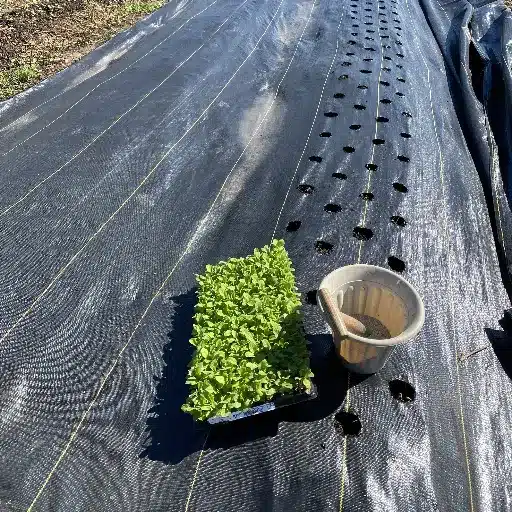
Garden Maintenance Improvement
The use of weed barrier fabrics is a significant advantage in the maintenance of gardens since they help to get rid of weeds and propagate the growth of plants more healthily. The latest researches say that the presence of weeds can be cut down by as much as 90% through the application of quality weed barriers, thus making it less time-consuming and more efficient for the gardeners. On the other hand, these fabrics are instrumental in the retention of soil moisture by evaporation reduction, thus leading to the use of approximately 25% less water in total.
The modern weed barrier fabrics are built to let soil get water and air which in turn promotes the root health and avails prevention of soil compaction. If we consider traditional methods such as plastic sheeting, which could lead soil to be dead, geotextile weed barriers are the better environment-friendly and also more effective in keeping the biodiversity of the soil. For instance, woven and non-woven geotextile are very tough, enduring even longer than the usual seasons, while biodegradable fabrics are the best solution for the temporary covering needed in the organic gardens.
Landscapes Made Aesthetic
The geotextile barriers that are used for weed control do not only have the benefit of being functional but they can also be an important factor in the improvement of the landscape’s general aesthetics. These barriers do the work of weed growth control effectively, resulting in a clean and tidier look and, therefore, a cease of frequent weeding. Homeowners and landscape contractors can then redirect their efforts to the more artistic aspects of gardening such as the creating of pathways, the planting of ornamental shrubs, and the making of colorful flower beds.
As per recent statistics, the global market for landscaping services is expected to experience a growth rate of 5% CAGR from the year 2023 to 2030, which is a reflection of the ever-increasing need for sustainable and good-looking outdoor areas. The geotextile fabrics are likely to be one of the factors that drive this trend as they are able to not only provide a good base for beautiful gravel paths, rock features, or even trees and shrubs but also keep them free of weeds.
Top Factors to Consider When Choosing a Weed Barrier
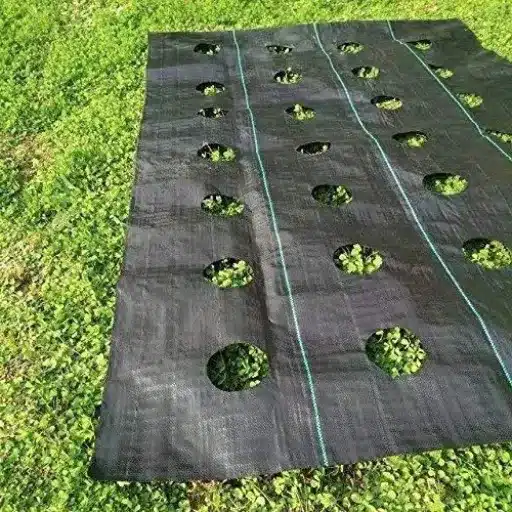
Durability and Longevity
The durability and longevity of a weed barrier are the main considerations when choosing one, as they are the factors that most directly reflect the long-term value of your investment. Geotextile weed barriers of high tensile strength and superior material quality usually last much longer, even under the harshest weather conditions. Recent results show that non-woven polypropylene fabric is one of the most durable options as it can resist among other things, the sun’s radiation, tearing, and even the degrading effects of chemicals in the soil.
Moreover, the permeability property of the fabrics is a major factor in the inhibition of weed and the longevity of the barriers. Textiles that provide for the passage of water and air while silencing the penetration of sunlight, aid in the growth of weeds, but at the same time prevent the overflow of moisture in the soil, which may result in the decay of the wearing out of the materials. The industry has seen the emergence of UV-stabilized fabrics that have 20-25% more weather resistance compared to their non-stabilized counterparts, thus making them a perfect fit for long-term projects.
Material Options for Weed Control Fabric
Woven Polypropylene
Woven polypropylene is a commonly used fabric due to its strength and ventilation. It allows air and water to circulate freely while blocking sunlight completely thus preventing weed growth. This material is specifically recommended for areas where durability is critical such as gardens, pathways, and landscapes. The thickness is usually between 3 and 5 ounces per square yard, while the UV-stabilized ones have a lifespan of 5 to 10 years in normal conditions.
Non-Woven Polypropylene
Non-woven polypropylene is the material of choice in areas where drainage isn’t as much of a concern, such as where there’s gravel or mulch. Its denser structure means better weed prevention, but it also means that sometimes moisture will be retained, which could be a problem for some plants’ roots. It is frequently deployed in greenhouse settings or under stone landscapes. Manufacturers are innovating non-woven fabrics that are super durable and have a longer lifespan making them suitable for tough climate conditions.
Biodegradable Weed Barriers
Biodegradable fabrics made from organic materials such as jute or hemp are enviro-friendly options for non-permanent weed control. These materials are natural plant-based substances and they decompose slowly and in doing so they come back to nature in the form of soil enrichment. They are very popular in sustainability projects like organic gardening or farm operations. Research has found that biodegradable barriers usually do not last longer than one to two growing seasons and this depends on the surrounding conditions.
Review of Top 2025 Weed Barriers
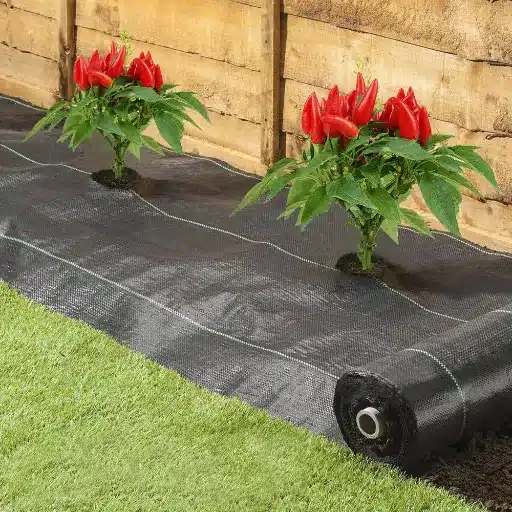
User Reviews and Recommendations
Mutual WF200 Geotextile Fabric
Mutual WF200 Geotextile Fabric is a product that has been appreciated very much, and the reason is its incredible strength and superior durability. One of the reviews pointed out that the fabric is very good for heavy-duty use, especially for stabilizing paths and supporting large landscaping projects. Feedback from the customers says that the fabric separates its performance for around 15 years, and for some of the users, such as in extreme weather conditions, the fabric even surpasses their expectations.
Ecogardener Premium Weed Barrier
The Premium Weed Barrier of Ecogardener is characterized as eco-friendly and as an ideal product for organic gardening. The users are very much into its lightweight quality that provides easy handling and is similar to cutting to fit the specific place. On the other hand, some customer feedback has been noting that the product is not so effective in high-stress areas where weeds are not allowed, such as under heavy stones or metal brick-paved walkways, thus not so good in the case of weed suppression. It is rated at 4.4 out of 5 stars and users mainly recommend it for vegetable and flower gardens where environmental safety is a concern.
Installation Tips & Maintenance Advice

Maintaining Your Weed Barrier for Optimal Results
Regularly Inspect for Damage
The routine inspections of the weed barrier fabric are very useful for spotting possible problems at the earliest stage. The things to look for are tears, possible fabric repositioning, and coming-up weeds. A study by the University of California has found that regular inspections can lower the risk of weeds breaking through by still 40% at most.
Reinforce Areas of Weakness
Where fabric looks to be loosening or tearing, use landscape staples to strengthen such areas. A close-spaced pattern of staple application—one staple in every 12 inches—would certainly help keep the barrier in its position by wind and foot traffic alike.
Mulch Coverage Should Be Maintained
The weed barrier fabric might be exposed to UV rays, and its resistance to damage may be impaired, as the mulch could be slowly coated and thinned down. The yearly addition of a 2-3 inch mulch layer is recommended by the Purdue University in their recent report, to both, extend the fabric’s life span and maintain an even protective layer.
Mistakes That Are Common to Installation and How to Avoid Them
| Common Mistake | Impact & Solution |
|---|---|
| Not preparing the Ground Properly | Laying weed fabric on uneven or unprepared ground is one of the commonest mistakes. The area gets thoroughly cleared from weeds, etc. and then the fabric gets laid down on a smooth surface. Studies propose that poorly prepared surfaces can reduce fabric efficiency by up to 30%, as gaps and overlapping irregularities allow weeds to take root. |
| Stakes or Fasteners Being Insufficient | If the number of stakes to hold the fabric down is cut, it might lead to misalignment and movement with time, especially in windy areas. Experts recommend placing a stake every 12 to 15 inches at the edges and in areas of heavy traffic to ensure that the fabric does not get displaced. Not doing so, the fabric becomes liable to moving, thus letting the soil below to possibly get infested by the weeds. |
| Using the Wrong Kind of Fabric | There is a significant difference in the performances of weed barrier fabrics. Less weight materials might get worn out faster at such places that have high foot traffic or heavy usage. As per a 2022 industry analysis, heavy-duty woven or non-woven fabrics can perform 25–40% better in environments with high weed pressure, thus making the right choice critical for the long-term result. |
Reference Sources
-
Bob Vila – “The 6 Best Landscape Fabrics, Tested and Reviewed”
This article reviews various weed barrier fabrics, including their features, durability, and effectiveness. It provides insights into the best options available for different needs.
Source Link -
Grassperson – “Weed Barrier Fabrics: Pros and Cons for Your Landscaping”
This blog discusses the advantages and disadvantages of using weed barrier fabrics, helping readers understand their practicality and limitations in landscaping.
Source Link -
Facebook Gardening Group – “What is the best weed barrier fabric for gardening?”
A community-driven discussion where experienced gardeners share their recommendations and experiences with different weed barrier fabrics, such as Dewitt Sunbelt.
Source Link
Frequently Asked Questions (FAQs)
How does landscape fabric stop weed seeds from sprouting?
By preventing the passage of light and by setting up a barrier that holds back their growth, landscape fabric manages to stop the germination of weed seeds. To make the fabric even more effective, mulch, gravel, or other ground cover can be put over the top of the fabric. Not only does this technique keep weeds away but also it does so while allowing water and nutrients to be retained in the soil.
Is it permissible to use weed barrier fabric on the pavements and sidewalks?
Absolutely, using weed barrier fabric on the pavements and sidewalks is a great idea. Heavy-duty driveway fabric can completely prevent the growth of a weed while letting the water pass through thus, conserving the soil and keeping the surface intact. Make sure the fabric is laid correctly and covered with either gravel or mulch to keep it secured and to maximize its efficiency.
What’s the procedure to cut the fabric for my garden?
Cutting the fabric is a simple task and can be done with either a pair of scissors or a utility knife. Before cutting, measure the area where you will put the weed barrier and cut it accordingly. It is important to secure the edges of the fabric either with garden stakes or by covering with mulch to keep the fabric from moving.
Ready to transform your garden? Choose the right weed barrier fabric and enjoy a beautiful, low-maintenance landscape for years to come!

